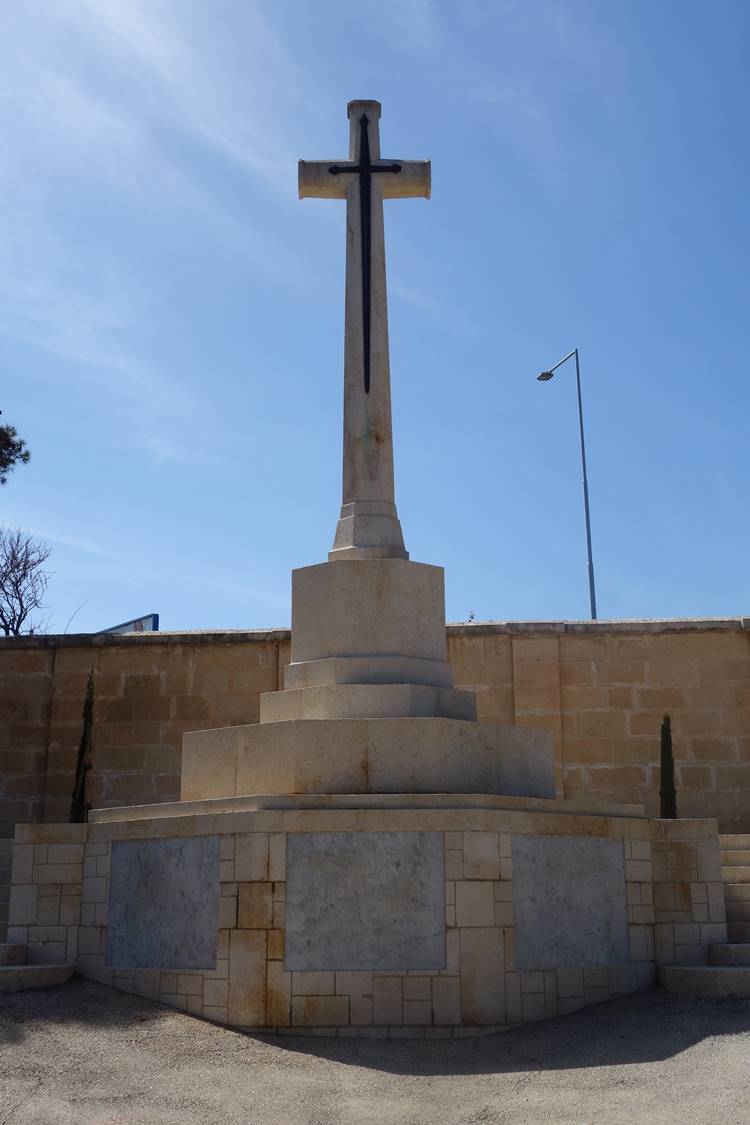This article is about the Pembroke Military Cemetery in Malta and some of the soldiers buried there. I have also written other articles about the cemeteries on Malta and a series of guides to help you research those who served in the British Army:
Pembroke Military Cemetery
In the 19th and 20th Centuries, Britain garrisoned the island of Malta and a large number of soldiers and their families were based at Pembroke, a town to the northwest of the capital Valetta. The garrison left its mark on Pembroke in the form of street names and buildings and there is a small cemetery for British and Commonwealth soldiers. The Pembroke Military Cemetery contains the graves of 323 Commonwealth service personnel who died in the two world wars, though most date from the second. If you are used to the uniformity of the Commonwealth War Graves Commission’s cemeteries on the Western Front, you’ll find Malta’s cemeteries to be very different. As the cemetery also contains 273 graves from outside the two world wars. Some of these date from the early years of the 20th century up until the present day.
The majority of graves for both world wars in Malta are collective burials. There is very little soil in the country, so most graves have to be cut directly into the bedrock below. This was an arduous and time-consuming process and very dangerous during the Second World War when burial parties had to contend with air raids. However, it is not unusual to come across single burials, typically of officers, in Maltese cemeteries. The headstone below is typical of the ones you find on the island, with three deaths taking place between 7 and 9 April 1942 and the last, Gunner Fensom on 27 May 1942.

Beneath the Cross of Sacrifice in the cemetery is the Pembroke Memorial which commemorates fifty-two service personnel who are buried elsewhere in Malta and whose graves are difficult to maintain. These deaths all date from the Second World War. A busy road runs directly behind the wall which provides a constant hum of traffic. There are also graves and a memorial to seventeen Maltese soldiers who were killed in a plane crash at El Adem, Libya on 10 October 1961. The Catholic Church refused to allow any of the dead who were Labour Party (of Malta) supporters to be buried in a Catholic cemetery due to a political dispute at the time.
Of the Second World War burials in the cemetery, ninety-three were serving with the Royal Artillery when they died. During the Siege of Malta (June 1940 – November 1942), a vital part of the island’s defences was its anti-aircraft guns manned by artilleryman. As they remained above ground during the numerous air raids, they suffered many casualties. Others died after the end of the siege, one of whom was Bombardier Michael Nolan Moss of the 190th Battery 10th Heavy Anti-aircraft Regiment. The war office casualty lists show that he wasn’t killed in action and the war diary of the 10th Heavy Anti-aircraft Regiment may shed light on his death.


